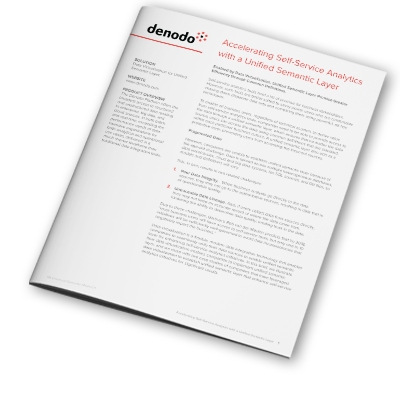Enabled by Data Virtualization, Unified Semantic Layer Promise Greater Efficiency through Common Definitions.
To enable all business users, regardless of technical acumen, to derive value from self-service analytics tools, companies need to be able to provide access to the data through a unified semantic layer, which ensures that no matter the data source, users can access the data using common definitions that are standard, within each particular business culture.
However, companies are unable to establish unified semantic layer because of the age-old challenge: Data is spread across multiple heterogeneous databases, data warehouses, cloud and big data systems, No SQL sources, and flat files, so models and definitions will vary.
Download this solution brief to learn more about the following:
- The two related challenges with the age-old challenge.
- How we define a Universal Semantic Layer.
- How data virtualization addresses the highlighted challenges.
- How data virtualization enables companies to implement unified semantic layer.
- Two case studies of companies that have successfully leveraged data virtualization to implement universal semantic layer in the service of true self-service analytics.

